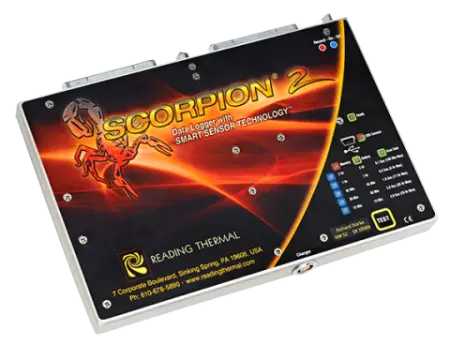Great biscuits don’t just taste right – they feel right, look right, and hold up through transport and shelf life. That level of consistency depends on more than heat alone. Temperature and humidity work together to shape oven spring, set structure, develop color, and manage moisture. When you can see both clearly, you’ll make faster adjustments, reduce scrap and keep every shift on spec. Reading Thermal has some information on using thermal profiling of industrial ovens to determine optimal baking times for biscuit production.
Why Temperature and Humidity Matter Together
Temperature drives how quickly heat reaches the surface and core, while humidity controls how moisture moves out of the product. If the air is too dry early, crust can set before the crumb is ready, trapping steam and causing tunnels, or uneven lift. If it’s too humid late, color stalls and texture turns rubbery. Monitoring both lets you tune each zone so dough expands when it should, sets when it’s ready, and finishes with the color and bite your customers expect.
What a Useful Oven Profile Looks Like
A useful profile tells a simple story from infeed to discharge. You’ll see air temperature patterns by zone, when the product hits critical set points, and how humidity rises and falls as water leaves the dough. With that picture, you can make smart moves instead of adding minutes to dwell time, and hoping for the best. The goal is repeatability: the same curve today, tomorrow and on a second line across the plant. Reading Thermal’s SCORPION® 2 Data Logger gives you a straightforward way to capture temperature and humidity on the same run.
From Curves to Confident Adjustments
Data earns its keep when it changes what you do next. SCORPION® Software lets you compare lines and standardize “golden profiles” for each product. If buns are drying out by day two, a quick review might show an overly dry early zone pulling moisture too fast; lifting humidity there can protect softness without sacrificing color. If crackers lag on color, you may see humidity hanging high in the middle zones; trimming it slightly can restore snap without raising overall temperature. Small, specific changes beat broad resets every time.
Simple Habits That Keep Results Consistent
The best monitoring programs are easy to follow on a busy floor. Use consistent carriers and sensor placements so comparisons are apples-to-apples. Profile after maintenance, seasonal changeovers, or formula shifts, and tie each run to a clear question – aligning two ovens, cutting re-bakes, or validating a new product – so findings translate directly into setpoints, not just charts.
See More, Adjust Less and Waste Less
When temperature shows how heat arrives and humidity shows what moisture does with it, your team can act with confidence. Monitor both, and you’ll tighten color, protect texture, and stabilize shelf life without stretching dwell time.
Reading Thermal technology can deliver a practical, bakery-ready way to understand the bake and keep results consistent shift after shift. When it comes to thermal profiling of industrial ovens to determine optimal baking times for biscuit production, our equipment is unsurpassed. Please don’t hesitate to get in touch if you would like to learn more. You can use our convenient online contact form, or you can give us a call at 610-678-5890.

